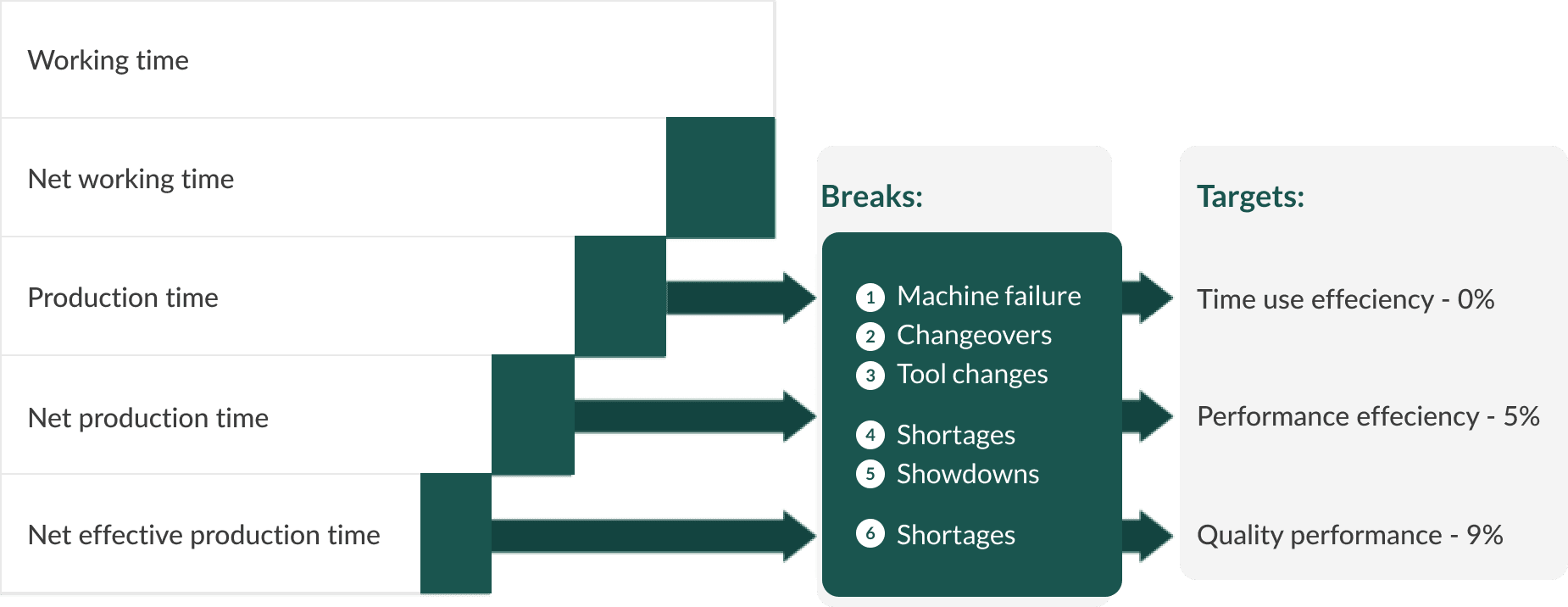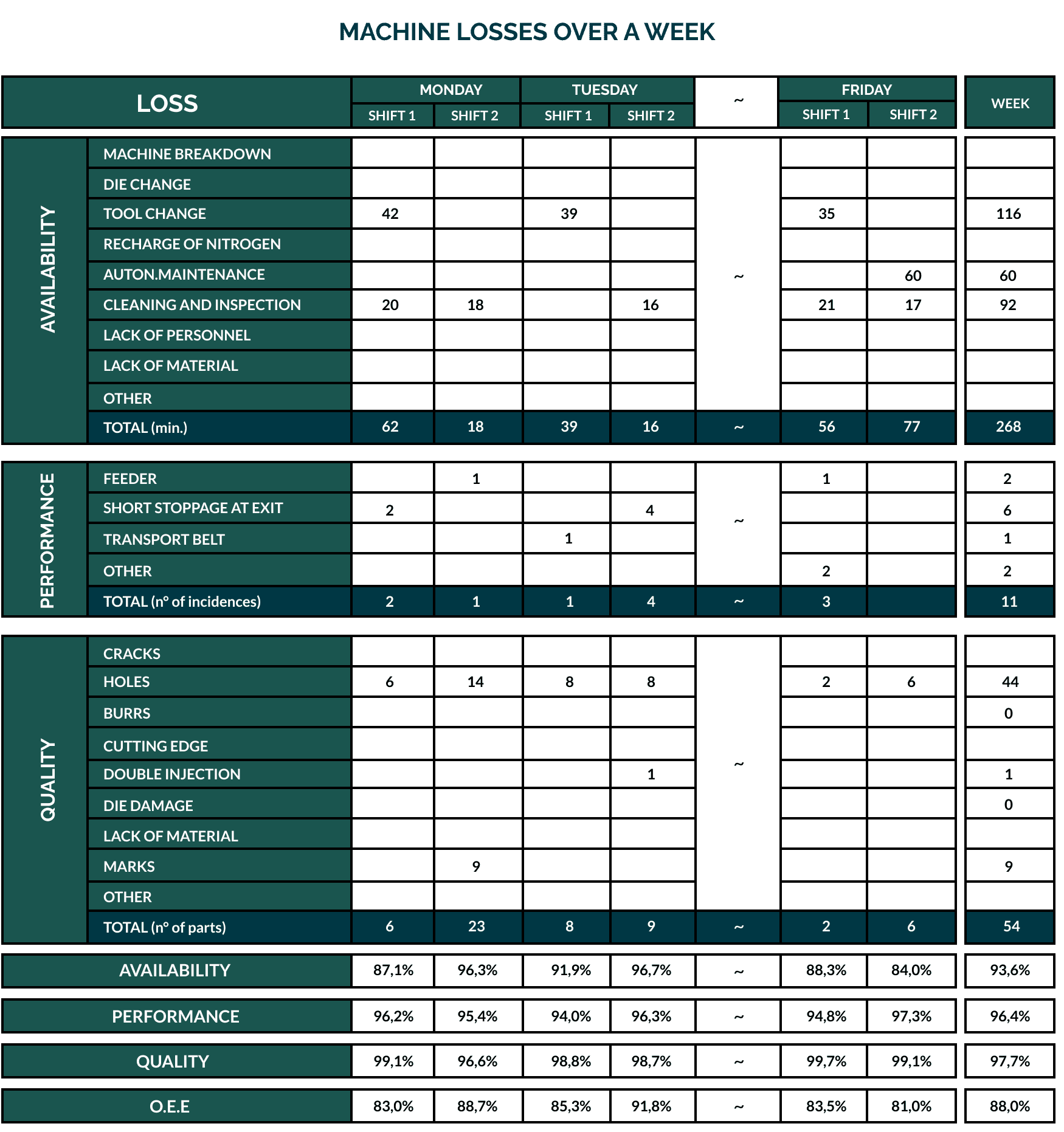With a large proportion of manufacturing costs attributed to maintenance, it’s important to ensure that it is done properly to minimize production losses and improve resource allocation. However, oftentimes maintenance isn’t done properly which leads to more frequent maintenance than would normally be necessary.
But money wasted with inefficient maintenance isn’t the only problem with poor maintenance. Poor maintenance can lead to a host of other problems. In order to successfully prevent poor maintenance, we need to understand what the consequences of it are.

Is your equipment working all the time at the desired speed and the expected quality standard? Probably not.
All machines have equipment downtime for different reasons. They are usually categorized in 6 major ways:

If some of your machinery is expensive, you probably want to collect downtime data in detail to understand where you lose the opportunity to make good products. In the example below, we break down where a machine’s losses over a week in a table.

Using a table, it’s easier to draw conclusions for immediate change. In the example above, we can identify the following:
The more complex and high-tech the equipment, the more you need good maintenance in order to avoid loss of machinery operation time and efficiency.
Here are typical ways this happens:
A worn-out tool or a machine functioning abnormally will create products that have to be reworked or scrapped. Poor quality often goes hand in hand with high equipment downtime – they are both indicative of insufficient maintenance.
In most factories, there are 2 ways of implementing quality control:
There is actually considerable overlap between these two preventive activities. How does it play out in different processes?
There are many ways a robot can create quality issues. It may lose some of its spatial integrity (ability to move precisely as expected) because a component got worn. The servo motor might not run as smoothly as it is supposed to. The tooling at the end of an arm might start to wear and might no longer be capable of completing its job properly. The list goes on.
After a clear understanding of what the impact of poor maintenance might lead to, you can start planning for preventative actions.
Want to know how a preventive maintenance system helps cut costs and increase productivity? Click below.
